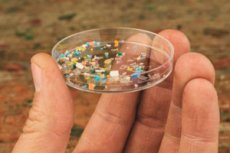New publications
Nanoplastics reduce the effectiveness of antibiotics and promote resistance
Last reviewed: 02.07.2025

All iLive content is medically reviewed or fact checked to ensure as much factual accuracy as possible.
We have strict sourcing guidelines and only link to reputable media sites, academic research institutions and, whenever possible, medically peer reviewed studies. Note that the numbers in parentheses ([1], [2], etc.) are clickable links to these studies.
If you feel that any of our content is inaccurate, out-of-date, or otherwise questionable, please select it and press Ctrl + Enter.

In a recent study, an international research team with significant participation from the Medical University of Vienna examined how nanoplastic particles deposited in the body affect the effectiveness of antibiotics. The study found that plastic particles not only impair the effectiveness of drugs, but can also contribute to the development of antibiotic-resistant bacteria. The results of the study were recently published in the journal Scientific Reports.
To find out how nanoplastic particles interact with antibiotics in the body, a team of researchers led by Lukas Kenner (Meduni Vienna), Barbara Kirchner (University of Bonn) and Oldamur Hollotzky (University of Debrecen) compared a common drug with commonly used types of plastic. The focus was on the broad-spectrum antibiotic tetracycline, which is used to treat many bacterial infections, such as respiratory, skin and intestinal infections. As for the plastics, the choice fell on polyethylene (PE), polypropylene (PP) and polystyrene (PS), which are ubiquitous components of packaging materials, as well as nylon 6,6 (N66), which is found in many textiles such as clothing, carpets, sofa covers and curtains. Nanoplastics are smaller than 0.001 millimetres in size and are considered particularly harmful to humans and the environment due to their small size.
Using sophisticated computer models, the team was able to prove that nanoplastic particles can bind to tetracycline and thus impair the effectiveness of the antibiotic. "The binding was particularly strong with nylon," emphasizes Lukas Kenner, pointing to a largely underestimated danger indoors: "The load of microplastics and nanoplastics indoors is about five times higher than outdoors. Nylon is one of the reasons for this: it is released from textiles and enters the body, for example, through breathing."
The danger of antibiotic resistance
As the study results show, binding of tetracycline to nanoplastic particles can reduce the biological activity of the antibiotic. At the same time, binding to nanoplastics can lead to the antibiotic being transported to unwanted sites in the body, losing its targeted effect and potentially causing other unwanted effects. "Our finding that the local concentration of antibiotics on the surface of nanoplastic particles can increase is particularly worrying," says Lucas Kenner of another detail of the study. This increase in concentration can lead to the development of bacteria that are resistant to antibiotics. Plastics such as nylon 6,6 and polystyrene, which bind more strongly to tetracycline, can thus increase the risk of resistance.
In a context where antibiotic resistance is becoming an increasing threat worldwide, such interactions must be taken into account." Lukas Kenner, Meduni Vienna
The study shows that exposure to nanoplastics not only poses a direct health threat, but may also indirectly affect the treatment of diseases. "If nanoplastics reduce the effectiveness of antibiotics, this creates a serious dosing problem," says Lucas Kenner, pointing to future studies that will examine the effect of nanoplastics on other drugs.
